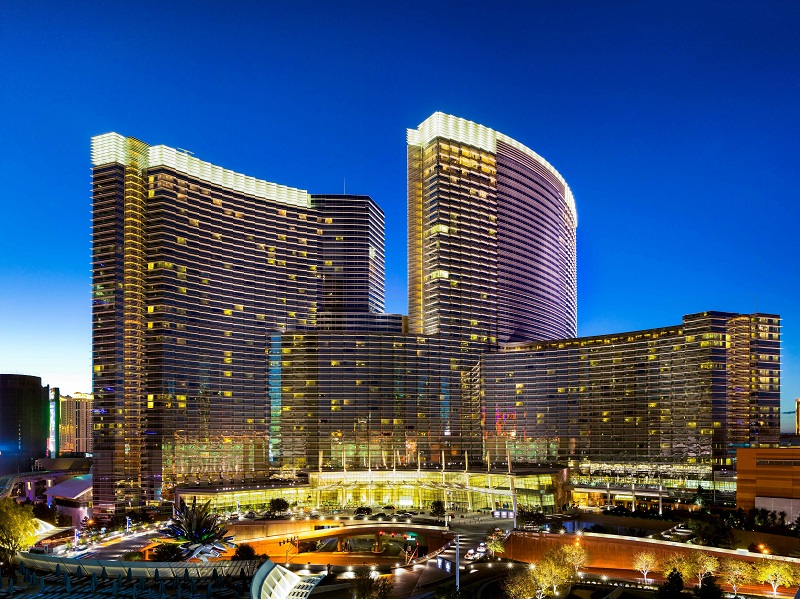
Cardboard Design: Physical Visualizations Of Real-time Data With Arduino
HANDS ON
Paweł Twardo
Karol Kowalik
Stanisław Sypiański
Jakub Burtea
Exploring Casino Architecture

When entering a casino, one may observe the deliberate design choices that shape the environment. The architecture of these establishments serves a purpose beyond functionality, aiming to tell a story, create an ambiance, and immerse visitors in a world of luxury and allure. Every aspect, from the exterior grandeur to the smallest details, is carefully planned to engage the senses and enrich the overall experience.When entering a casino, one may observe the deliberate design choices that shape the environment. The architecture of these establishments serves a purpose beyond functionality, aiming to tell a story, create an ambiance, and immerse visitors in a world of luxury and allure. Every aspect, from the exterior grandeur to the smallest details, is carefully planned to engage the senses and enrich the Winbox overall experience.
The structures are continuously evolving to meet the evolving demands of the industry and its clientele, ensuring that they remain relevant and appealing.
Evolution of Casino Design
The evolution of casino design is a reflection of changing trends and technological advancements in the industry. Initially, casinos were designed with simple layouts focused on functionality. Over time, architects began incorporating themed decorations to attract more visitors. This shift towards opulence resulted in the construction of elaborate structures aimed at impressing guests.
With advancements in technology, modern casinos have integrated features such as interactive lighting, immersive sound systems, and advanced security measures. These technological enhancements have improved the overall gaming experience for patrons.
Today, casino design continues to evolve, combining luxury with innovation to create immersive environments for guests.
Iconic Casino Structures
In the realm of casino architecture, several iconic structures have made a significant impact on the industry.
The Marina Bay Sands in Singapore is renowned for its rooftop pool offering panoramic views of the city skyline.
The Casino de Monte-Carlo in Monaco is celebrated for its opulent Belle Époque architecture, reflecting a rich historical heritage.
The City of Dreams in Macau features bold and futuristic design elements, setting it apart as a symbol of innovation in the industry.
These iconic structures not only attract visitors but also serve as benchmarks for architectural excellence within the casino landscape.
Luxurious Interior Elements
The interior elements of a casino are meticulously designed to enhance the overall experience for visitors. Elements such as chandeliers, velvet seating, and marble floors are commonly used to create an atmosphere of elegance and sophistication. Architectural details, like ornate ceilings and lighting fixtures, add a touch of grandeur to the space.
The combination of these elements aims to create a luxurious ambiance that appeals to guests seeking a high-end experience. Live music and ambient sounds further contribute to the overall atmosphere, creating a sense of excitement and exclusivity within the casino environment. The careful integration of these elements results in a cohesive design that elevates the overall aesthetic appeal of the space.
Influence of Modernism
The influence of modernism on casino architecture is evident in the emphasis on clean lines, minimalist design, and the use of innovative materials. This architectural style has led to a departure from elaborate decorations and intricate detailing, favoring instead a focus on functionality and sophistication.
Modernist casino designs often feature open spaces, abundant natural light, and a neutral color scheme to create a sense of openness and calm. Materials such as glass, steel, and concrete are commonly used to give a contemporary feel while still maintaining a luxurious ambiance.
Furniture and fixtures are carefully chosen to complement the overall design aesthetic, contributing to the modernist theme. The shift towards modernism in casino architecture reflects a preference for a timeless and elegant look, as well as a progressive approach to design principles.
Sustainability in Casino Architecture
The trend towards sustainability in casino architecture has gained traction in recent years, prompting a shift towards eco-friendly design practices. Casinos are increasingly adopting energy-efficient lighting, heating, and cooling systems to lessen their environmental impact. The use of recycled materials in construction and the deployment of water-saving strategies are becoming more common.
Integration of green roofs and living walls in casino structures aims to enhance biodiversity and air quality. Furthermore, a growing number of casinos are investing in renewable energy sources such as solar panels to generate on-site electricity. Prioritizing sustainability not only reduces casinos’ ecological footprint but also serves as a model for other industries to emulate.
Cultural Influences in Design
Integrating cultural influences into casino architecture can offer a distinct and immersive design experience. By incorporating elements inspired by various cultures such as Asian, European, Middle Eastern, or Indigenous motifs, casinos can create spaces that showcase a diverse range of traditions, aesthetics, and symbols. These cultural influences, manifested through intricate patterns, vibrant colors, traditional materials, and architectural styles, contribute to shaping the overall ambiance of a casino.
Embracing cultural diversity in design not only enhances the visual appeal of the space but also facilitates a deeper connection with visitors by resonating with their backgrounds and experiences.
Technology Integration in Casinos
Technology integration in casinos has significantly transformed the gaming experience for visitors. Through the use of interactive digital screens, patrons can access game information conveniently. RFID technology in chips enables efficient tracking of bets, enhancing operational processes. Advanced security systems are in place to monitor activities discreetly, ensuring a secure environment for guests without compromising their enjoyment.
Mobile apps have streamlined access to games and rewards, offering a personalized experience for users. Virtual reality installations within casinos provide immersive gaming opportunities, creating a unique and engaging atmosphere. High-tech slot machines with interactive features cater to player preferences, enhancing the overall gaming experience.
Feng Shui Principles in Design
Moving away from technology-driven advancements in casino design, let’s delve into the realm of Feng Shui principles in design. Feng Shui, an ancient Chinese practice, is centered around creating harmony and balance in spaces to facilitate positive energy flow.
In casino architecture, Feng Shui principles are often utilized to enhance the overall atmosphere and promote good fortune for visitors. Key elements such as the layout of gaming floors, positioning of tables and machines, as well as the selection of colors and materials, are meticulously chosen to align with Feng Shui beliefs.
Impact of Lighting and Sound
Lighting and sound are key elements in shaping the atmosphere within a casino setting. The strategic use of lighting helps to highlight gaming areas and create a sense of excitement while also influencing the overall mood.
Sound, in conjunction with visual cues, plays a significant role in enhancing the ambiance. By carefully selecting music and sound effects, casinos aim to maintain energy levels and sustain player engagement.
The auditory experience, whether it be the background noise of slot machines or carefully curated music in high-traffic areas, is designed to immerse visitors in the gaming environment. When combined, lighting and sound work together to establish a captivating and immersive environment for guests.
Future Trends in Casino Architecture
In the realm of casino architecture, there’s a notable shift towards more immersive experiences in response to evolving guest demands and industry trends.
The future direction of casino architecture is characterized by the integration of physical and digital elements to create interactive environments that engage visitors. Sustainability practices are gaining traction, with a focus on green building techniques and eco-friendly designs.
Flexibility is emphasized in design to accommodate varying needs and events. Technology plays a significant role, with the incorporation of augmented reality and biometric systems for improved security and personalized guest experiences.
These trends aim to enhance the overall casino experience by providing guests with unique and memorable moments within a dynamic architectural setting.
Conclusion
As you delve into the world of casino architecture, the evolution from simple layouts to extravagant, themed structures is truly captivating. With a focus on luxurious interior elements, modernist influences, and sustainable practices, casinos continue to push the boundaries of design excellence. The integration of technology, Feng Shui principles, and innovative lighting and sound techniques further enhance the overall guest experience. Keep an eye out for future trends in casino architecture as the industry continues to innovate and impress.


The Continuous Delivery book was released in 2010. Described as the most impactful post-Agile practice, it has changed the way we think about developing software. It forced us to start thinking of software being “done” to mean released. With more features getting to done sooner CD practices have enabled us to get early feedback from users and taught us a lot about testing, monitoring and automating our delivery along the way. But mobile development has often been left behind. Or has it?
From the time of the first iPhone in 2008, mobile development has changed dramatically. Rapid improvements and added features in GPS, Touch ID and facial recognition have caused the quality of mobile applications to improve.
In this talk we will cover how, in a post Continuous Delivery world, we can continuously adapt and improve in many different aspects of mobile development.

AsyncDisplayKit is an iOS framework that keeps even the most complex user interfaces smooth and responsive. It was originally built to make Facebook’s Paper possible, and goes hand in hand with pop’s physics-based animations - but it’s just as powerful with UIKit Dynamics and conventional app designs. In this tutorial, you’ll learn how to use AsyncDisplayKit to make silky-smooth user interfaces - by one of the authors of the framework himself!

User Experience design is an important aspect in software development. There is often times a linear process designers follow to create an overall User Experience. What guides the designer’s decisions outside of user testing and software requirements is a set of intuition factors. This talk will cover Intuition Factors used when designing software with hardware components.

Designers want to make user interfaces beautiful and distinctive, developers must make them function, and end-users need them to accomplish tasks efficiently. Why are these three goals often at odds? How can we get designers and developers to understand and support each other’s missions, and still give the users what they really need?

For 10 years, Groovy has dramatically improved the productivity of Java developers on the desktop. With unique like closures, builders, AST transformations, traits, optional static compilation and many more, Groovy turned out to be a very competitive language on the JVM. Compared to other JVM languages, Groovy has the major advantage of being totally Java-friendly, both in terms of syntax and interpretability. But during those years, what happened on the mobile world? In particular, Android developers are used to develop applications in Java, so why Groovy, a JVM language, wouldn’t be usable for Android development too? Can we ease the pain of Android developers too?

Great design results from a process of constant iteration and relentless refinement. Design is fundamentally collaborative. We believe that the best ideas grow and expand with the input of others.
Open design is not about sharing a cropped final static image. It is about sharing your process; the hours of missteps and false starts you tore through, the frustration and anguish you pushed beyond, before you arrived at that final iteration. Each of those false starts is a learning experience, a teachable moment to invite others to understand not just what you designed; but how you did so.
Designing in the open can be frightening. But with the collective, collaborative genius, together we can push the boundaries and create better work.

Agile Mobile Development: Testing, Distribution, CI and More

Apps are getting larger, pushed by ever increasing user expectations. Social media, maps, advertisements,… As a developer, you may add a few libraries, and before you know it, your app is exceeding the constraints of the Android platform. In this presentation, I will discuss the main problems and some solutions. ProGuard, the bytecode optimizer and obfuscator in the Android SDK, is an obvious first step. I will show some optimized configurations that can help you to reduce the size of common libraries. If ProGuard isn’t sufficient, you may have to resort to more drastic techniques, such as dex splitting. I’ll discuss some techniques and their implications. I’ll also introduce the new dex splitting feature of our software DexGuard.

In this talk, we’ll have a look at the new things Swift brings to the table. Of course, we can use it as a different Objective-C, but with Swift many new things are possible.

Who’s had to refactor a mess of CSS? Who’s had unintended design changes (especially in responsive designs) lead to regressions? Developers had similar problems years ago, and developed automated testing techniques to protect their work. In this talk, we’ll explore what automated testing might look like for design. What would it look like to have a more defined definition of “done” for design? What if designers could refactor with impunity? We’ll explore testing possibilities for Visual design, User Experience design, and front-end engineering, and try to build a testing pyramid for design.
Women in tech
Women in tech has been a huge topic lately, yet still it seems vague. Is it only feminist mumbo-jumbo, or is it a real problem? What kind of behaviors can women expect when they enter area that used to be “for guys only”? We’ll try to answer that questions.


Women in tech
Women in tech has been a huge topic lately, yet still it seems vague. Is it only feminist mumbo-jumbo, or is it a real problem? What kind of behaviors can women expect when they enter area that used to be “for guys only”? We’ll try to answer that questions

Imagine you change your code and see the results immediately, no need to wait for your machine to recompile whole project and put in on device , instead of working 8h you’d work 4h and achieve same results, sounds good?
What could you achieve in those extra 4h you just got ? Either bring even more polish to your great apps, or have more time for your family and life.
Let’s talk about using advanced techniques to maximise your development speed, Playgrounds for Objective-C and how you can use runtime / code injection to get most out of your time.

For more than 5 years I’ve been experimenting creatively with mobile technologies. Because of this I developed Protocoder: a framework for creative exploration and prototyping for Android devices. Although Protocoder was created for a different purpose, I started to use it in a way that I could re-use my old phones in unexpected ways.
During the talk I will go through a story of trash, technology, planned obsolescence and utopian visions on how to repurpose the hundred millions devices we thrown away yearly.

This talk will introduce the new security features added in Android 5.0 and
will briefly describe their platform integration and internal implementation.
Features to be covered:
- Full disk encryption
- Verified boot and block-based OTAs
- SELinux policy changes
- Smart Lock (trust agents)
- Multi-user changes and managed profiles
- Device management API changes
- Cryptographic provider and SSL changes

I will try to figure out does it even make sense to try to predict trends on an annual basis in a landscape where there are so huge users shifts across various devices.

Since 2009, iOS has provided a great user experience, not only for people with perfect eyesight, hearing, and motor skills, but for everyone. There is usually very little coding involved in making sure that our own apps provide the same great experience.
Standard controls comes with a lot of behavior for free, and can be studied, customized, and used to tailor the experience for our apps and controls. Providing a good experience means thinking about the functionality of our apps and asking simple questions like: what does this button do?, what is the content on this screen?, etc.
Questions like these don’t relate to just making the app accessible. It’s relevant to all users of your app, equally, and should be asked both early and often in the development process.

Using two specific case studies, as well as learnings from additional projects, I walk attendees through the weekly cadence that we use at Carbon Five during product development. This methodology and its activities establish a sustainable culture of integrated and invested teams that are able to communicate across disciplines in a meaningful way.The result of creating this type of culture via cadence allows our teams to put new features in front of users each week for validation and hence move the product closer to its market fit faster.

Since our earliest beginnings, humans have been on a quest to master the environment. As the Internet of things becomes reality, the latest chapter of this very long journey unfolds before us. While amazing opportunity awaits, so does the potential for all of it to go terribly wrong.
In this talk I’ll explore the importance of aligning your designs for the Internet of things with human behavior in order to avoid failure. I’ll also talk about what we’ve learned at emberlight as we work to expand the user experience of lighting in the shadow of a design that has stood the test of time - the wall switch.

The internet of things is built around sensors, without sensors we don’t know what goes on and we can’t tell our software to make rational choices based on the analytics of this data but building our own sensors are not always practical or cost efficient when there are numerous of the shelf solution that could do the same thing if we could only access their data! This talk demonstrates how to reverse engineer standard sensor wireless protocols from weather stations, movement sensors and more to use for your own designs!

Minimizing the cost of change in your codebase is important, but what does that really mean? Quick prototypes are different from long-term infrastructure; small teams operate differently than large ones. Even worse, projects change over time, and today’s weekend hackathon often becomes tomorrow’s legacy code.
This talk will explore how we can manage our codebases and engineering processes so that our code remains maintainable, even as the definition of “maintainable” shifts.

Android’s staggering growth over the last few years has come both on flagship phones and budget devices. Those budget devices are now in direct price competition with feature phones and bringing hundreds of millions of people onto the platform each year. In order to develop great products for these people, getting smart about performance, connectivity, and device characteristics has become crucial for Facebook. I’ll discuss the qualitative and quantitative approaches we’ve taken to better understand the Android device market, and present the way we’ve scaled this in the organization. I’ll also cover the ways we’ve made the Facebook for Android application smarter about its device and network, and the optimizations we’re exploring for the future.

Android finally has established design guidelines and widely used UI design patterns. Android users understand functionality of components like the navigation drawer, action bar, sharing and many more. However, the guidelines are just that, guidelines, not rules.
All Android apps should not look alike but neither should they all reinvent all the controls. In this presentation I will take a deep dive into details of the common design patterns and how they can be customised without compromising usability.
I want to help developers and designers alike to understand how to correctly use Android UI design patterns.

The world is full of pretty products that aren’t very functional. While customers may be initially attracted to those shiny objects, in the long run, if a product is an empty shell, it will not last. An useless product that looks great is a failure. And the failure belongs as much to the designer as anyone else.
If you design hoping people will notice how awesome your design is, you will be disappointed. Or you will build something that isn’t useful. The best design decisions are the ones people don’t notice. The subtle choices that contribute to making the product easier to use, better at it’s purpose. If you do your job well, all but the most discerning customers won’t be able to articulate why they like your product more. They just will.
In this talk, we’ll take a look at examples of products that are designed well, not because of how they look, but how they work. The small decisions made along the way that contribute to success. We’ll also talk about avoiding the common pitfalls of design for design’s sake. Over-abundant animations, the obsession with “clean” interfaces that lack function, making our products so opinionated that only we like them—all the things we designers tend to fawn over that don’t matter much to most people. Finally, we’ll talk about balancing the need to serve our customers’ best interests, vs. our own needs to survive as a company. You can’t build products for people, after all, if you go out of business.
Successful design solves problems. Well designed products meet needs. Focus your energy there, and you will build something truly great.

I’ve written a few games for mobile devices in JS and I’ve done my time in the enterprise visualizing tools space too.
Let’s talk about practical things like performance, frameworks and team building with these concepts with a real focus on the lessons learned doing this the hard way when the only tools at your disposal are a text editor and a team of silverlight developers.

Twitter was born on mobile, and we know what it takes to design, release, and grow a great mobile app. In this talk, we will share some of the lessons we have learned and highlight how Fabric, Twitter’s recently announced modular mobile platform, makes it easy for developers to build great apps. Fabric combines the services of Crashlytics, MoPub, Twitter and others to address some of the most common and pervasive challenges that all app developers face: stability, distribution, revenue and identity.

We cannot interact with our everyday life in the same way we interact with a desktop computer. Technology shouldn’t require all of our attention, just some of it, and only when necessary. How can our devices take advantage of location, proximity and haptics to help improve our lives instead of get in the way? This presentation covers the history of calm technology, wearable computing, and how designers can make apps “ambient” while respecting privacy and security. We’ll look at ambient notifications, compressing information into other senses, and designing for the least amount of cognitive overhead.

Traditionally browsers and mobile applications communicate via servers, but what if they could speak to each other? WebRTC is a small set of APIs that make peer to peer communication possible between browsers and mobile applications. Video, audio and data can flow from browser to browser, from app to app, opening up a new set of possibilities for modern communications.
We’ll take a look at what WebRTC gives you and, importantly, what it leaves out. We’ll take a look at implementing a simple chat application and speculate over more complicated use cases and examples.

Topics covered:
- iOS security mechanisms
- Understanding security from attacker perspective
- One more time about jailbreak and reverse engineering (tools detection and anti-detection)
- Best practices with real code examples
- Advanced security (iOS kernel, syscalls)

Making a well designed Android application is not enough anymore, it has to be awesome. This talk will show you how to change a good design to a awesome design to it will benefit your app.

Dagger, Flow and Mortar are open source libraries that form the backbone of Square’s flagship Register app. Use them to spend less time fighting the life cycle and more time coding (and unit testing).
Mobile Security Demystified
Security experts discuss common pitfalls, lessons learned, and tricks & tips for improving the security of your apps.

Mobile Security Demystified
Security experts discuss common pitfalls, lessons learned, and tricks & tips for improving the security of your apps.

In this talk I would like to present a brief history of the kinds of graphical assets we use in iOS apps from the very simple world of the first iPhone to the current jungle of screen sizes, resolutions and pixel densities across iPhones, iPads and (soon) watches. Next, I’d be presenting an overview of possible strategies to tackle this new reality (workflows, asset generation, space vs performance tradeoffs) as well as their impact on developer-designer collaboration.

A world-class product is obtainable when the relationship between developer and designer is harmonious, as well as a well structured process has been set in place. Cultivate this relationship by consistently engaging your product design team throughout each stage of the software development life cycle, as well as following a standard operating procedure. Fully integrate and synchronize your teams to deliver applications that are in the top echelon of software products.


Building stuff has never been easier - great technology, tools, and opportunities are nearly ubiquitous.
Yet somehow, building great stuff has never been more difficult - bad management, intense competition, and limited resources are just a few of the reasons that most projects fail.
As we are all asked to do more, faster, and with less, what can we do to keep up?
A truly high-performing team frequently exceeds expectations and over-delivers, yet is often overlooked as the surest component to success. In this talk, we’ll delve into a number of ways to identify, build, leverage, and participate in this often neglected secret weapon: A Kickass Team!

The Credit Card is over 60 years old and was invented way before the web came along, and we are paying the price or it. This notorious master of payments likes to be kidnapped, is easy to abuse, has a habit of bringing out the worst in web forms and loves to spread it’s digits all over the internet.
Cristiano Betta is a long time webdev and Developer Advocate at Braintree Payments. With a passion for payments and a broad sense of humor he takes apart the worst user interactions a Credit Card provides and shows what the future of payments could look like. From web to mobile, from IoT to wearables, the future of payments are more in flux than ever before and the Credit Card is very much at the heart of it all.

Apple has introduced “a better language” for iOS developers. But what options do we have for Android? Surely Kotlin should be under consideration! Android Studio is now based on Intellij Idea, the “native” environment for Kotlin.
Kotlin is a modern language for industry. It can help you reduce the amount of code you write for Android applications and at the same time make it readable and more maintainable. In this session we’re going to see how certain constructs and DSL’s can be used to make Android more enjoyable.

In this talk Marcus Zarra will be clarifying the best approach to using Core Data in a multi-threaded environment. He will break down when you should be using Core Data on multiple threads, why you should be doing it and when you should not.
By the end of this talk you will have a firm grasp of how Core Data is meant to be used in a multi-threaded environment and with that knowledge you will be able to utilize Core Data properly whether you are using one thread or many.

Adam will talk about how Facebook completely rearchitected the model layer of their iOS app to use immutable models and a data flow architecture.
This required a major shift in thinking about how models work and he’ll share how they dealt with the challenges of applying this architecture shift while News Feed was still under active development.
Cooperation between programmers and designers
Designers and programmers may inhabit the same work space but more often than not they inhabit different worlds. This is not an optimal situation and, like all sub-optimal situations, needs to be addressed and improved to the benefit of all concerned, not least our clients and users. This session will be a no-holds-barred discussion about the roadblocks, dead-ends and pitfalls but also the great opportunities for closer collaboration and success stories of cooperation gone right.
As ever, the devils (and angels) are in the details so we will delve right into methods of work, examples of what has gone right (and not quite so right) on projects, and lessons learned. As technology becomes commoditised and skills are forever sharpened, success will come from placing increasing value on successful communication within teams, to help everyone reach their potential, and polish delivery of products as beautiful to use as they are robust and reliable.
This session is moderated by Ralph Talmont, a “communications guy” who has made the jump over the digital divide from publishing and publication design to building and advising technology companies.


Cooperation between programmers and designers
Designers and programmers may inhabit the same work space but more often than not they inhabit different worlds. This is not an optimal situation and, like all sub-optimal situations, needs to be addressed and improved to the benefit of all concerned, not least our clients and users. This session will be a no-holds-barred discussion about the roadblocks, dead-ends and pitfalls but also the great opportunities for closer collaboration and success stories of cooperation gone right.
As ever, the devils (and angels) are in the details so we will delve right into methods of work, examples of what has gone right (and not quite so right) on projects, and lessons learned. As technology becomes commoditised and skills are forever sharpened, success will come from placing increasing value on successful communication within teams, to help everyone reach their potential, and polish delivery of products as beautiful to use as they are robust and reliable.
This session is moderated by Ralph Talmont, a “communications guy” who has made the jump over the digital divide from publishing and publication design to building and advising technology companies.

We’ve all been to conference talks about testing. Most of them start with a general overview of the various types of automated tests and finish with a list of testing tools. I left each of these talks knowing I should be writing tests for my Android apps and feeling guilty for not doing so. After multiple attempts at setting up testing tools first in Eclipse and then in Android Studio, I finally found an approach that works well for me. In this talk, I will share what I have learned with the goal of demystifying the automated testing of Android applications.
With a good understanding of how to test our Android apps, we’ll finish with a walk through a sample project that demonstrates these concepts in action. I hope that you will leave this talk feeling inspired and excited to test your apps. Save the guilty feelings for the bug reports and crash logs!

Dave Wiskus explores the experience for people on both sides of the glass; user and creator alike.

Women in tech
Women in tech has been a huge topic lately, yet still it seems vague. Is it only feminist mumbo-jumbo, or is it a real problem? What kind of behaviors can women expect when they enter area that used to be “for guys only”? We’ll try to answer that questions

The Continuous Delivery book was released in 2010. Described as the most impactful post-Agile practice, it has changed the way we think about developing software. It forced us to start thinking of software being “done” to mean released. With more features getting to done sooner CD practices have enabled us to get early feedback from users and taught us a lot about testing, monitoring and automating our delivery along the way. But mobile development has often been left behind. Or has it?
From the time of the first iPhone in 2008, mobile development has changed dramatically. Rapid improvements and added features in GPS, Touch ID and facial recognition have caused the quality of mobile applications to improve.
In this talk we will cover how, in a post Continuous Delivery world, we can continuously adapt and improve in many different aspects of mobile development.

Cooperation between programmers and designers
Designers and programmers may inhabit the same work space but more often than not they inhabit different worlds. This is not an optimal situation and, like all sub-optimal situations, needs to be addressed and improved to the benefit of all concerned, not least our clients and users. This session will be a no-holds-barred discussion about the roadblocks, dead-ends and pitfalls but also the great opportunities for closer collaboration and success stories of cooperation gone right.
As ever, the devils (and angels) are in the details so we will delve right into methods of work, examples of what has gone right (and not quite so right) on projects, and lessons learned. As technology becomes commoditised and skills are forever sharpened, success will come from placing increasing value on successful communication within teams, to help everyone reach their potential, and polish delivery of products as beautiful to use as they are robust and reliable.
This session is moderated by Ralph Talmont, a “communications guy” who has made the jump over the digital divide from publishing and publication design to building and advising technology companies.

Cooperation between programmers and designers
Designers and programmers may inhabit the same work space but more often than not they inhabit different worlds. This is not an optimal situation and, like all sub-optimal situations, needs to be addressed and improved to the benefit of all concerned, not least our clients and users. This session will be a no-holds-barred discussion about the roadblocks, dead-ends and pitfalls but also the great opportunities for closer collaboration and success stories of cooperation gone right. As ever, the devils (and angels) are in the details so we will delve right into methods of work, examples of what has gone right (and not quite so right) on projects, and lessons learned. As technology becomes commoditised and skills are forever sharpened, success will come from placing increasing value on successful communication within teams, to help everyone reach their potential, and polish delivery of products as beautiful to use as they are robust and reliable. This session is moderated by Ralph Talmont, a “communications guy” who has made the jump over the digital divide from publishing and publication design to building and advising technology companies.

Mobile Security Demystified
Security experts discuss common pitfalls, lessons learned, and tricks & tips for improving the security of your apps.

Women in tech
Women in tech has been a huge topic lately, yet still it seems vague. Is it only feminist mumbo-jumbo, or is it a real problem? What kind of behaviors can women expect when they enter area that used to be “for guys only”? We’ll try to answer that questions
Flash talks in Auditorium 1
- 13:15 - Krzysztof Wróbel - From "I wish I could..." to "I will". Getting things done with TI Sensor Tag.
- 13:30 - Julita Pawińska - AppMobile 24 - API for portable devices
- 13:45 - Mateusz Grzechociński - Meet Jack&Jill;
- 14:00 - Kamil Trzciński - iOS Class Guard
- 14:15 - Stefan Buttigieg - From Doctor to Author, Connecting the Physical World to Mobile
- 14:30 - Aleksander Piotrowski - Android 5.0 internals and our inferiority complex.
Checkout the new version
Hint: this site supports HTML5 ApplicationCache.
Would you like to reload it now to see the newest content?
